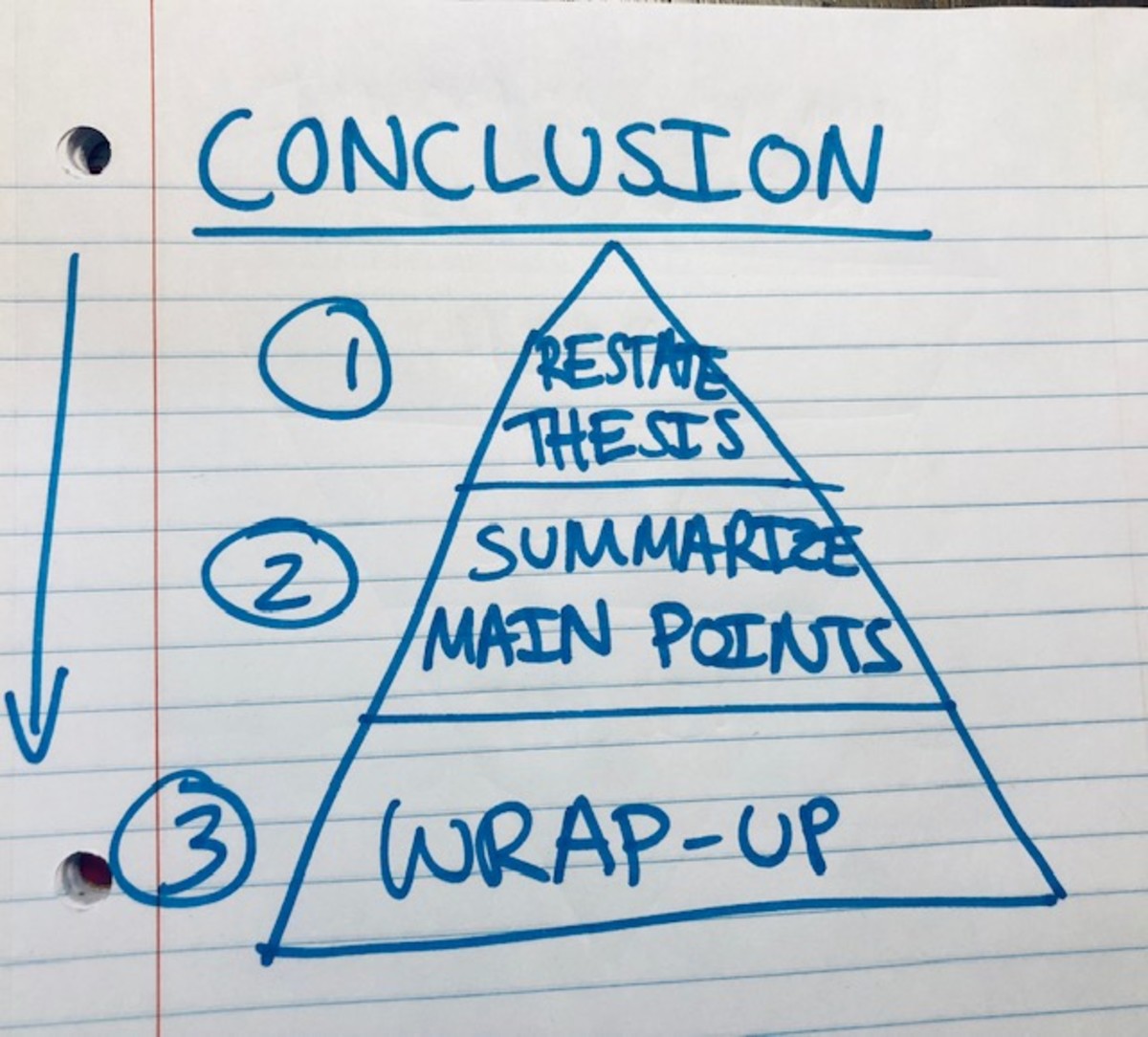ESSAY WRITING 101

ESSAY WRITING DEMYSTIFIED, OR THE SEVEN BUILDING BLOCKS OF THE TRADITIONAL EXPOSITORY ESSAY
Writing expository essays has probably caused groans throughout English classes since Benjamin Franklin was a teenager. Chances are, though, if you have a child in high school, he or she will be required to write essays as a vehicle for learning to express thoughts, demonstrate organization of ideas, and practice proficiency in the conventions of written language.
Here, then, are the seven most common parts of the typical expository essay:
1. THE INTRODUCTION
The three objectives of the introduction are to gain your reader's attention (sometimes called "the hook"), introduce your subject, and identify your major thesis. There are many methods to "hook" the reader, including using thought-provoking details, a challenging rhetorical question, an informative quotation, a telling definition, or an engaging anecdote. The introduction should be shorter than the body of the essay and give a clear picture of what the essay will cover.
The most important part of the introduction paragraph, however, is the major thesis.
2. THE MAJOR THESIS
Any thesis consists of two parts--subject and opinion. The subject is whatever the writer is writing about in the essay. The opinion is the point or argument that writer will be proving throughout the body of the essay.
There are two types of Major Theses--stated and implied. The stated major thesis should appear somwhere in the introduction and tell the reader what the essay will be about. The end of the introduction is probably the strongest position for the stated major thesis, but some teachers say anywhere from the middle down will work. Consequently, the weakest position for the major thesis is at the beginning, as the reader has not been adequately "eased into" the essay before being bombarded with the author's point.
The implied major thesis is not stated outright, but by the end of the essay, the reader should have a clear understanding of the author's main argument, mainly through the graceful use of analysis and supporting details.
3. THE BODY
In the body of the essay, the writer explores the ideas and points promised in the major thesis, by dividing the sub-points into disparate body paragraphs. Each body paragraph should cover one discrete point or idea. The three most important parts of the body paragraphs are the Topic Sentence, The Supporting Evidence, and the Analysis.
4. THE TOPIC SENTENCE
As a topic sentence is also a thesis it, too, has a subject and opinion. The topic sentence also tells the reader what idea or sub-point that specific body paragraph will cover.
5. THE SUPPORTING EVIDENCE
The supporting evidence consists of specific examples, statistics, evidence, data, or quotations that the writer uses to prove to the reader that his or her thesis is true. In a literature-based essay (an essay based on a novel, Of Mice and Men, for example, or Catcher in the Rye or short story, poem, or film), the supporting evidence would be specific events in the book that prove the thesis, either through direct quotations or author paraphrase*. In a persuasive essay, the data might be statstics from research studies or quotes from experts. In a personal essay, evidence is something that has happened in history, society, or the writer's persona life. Other names for supporting evidence are examples, proof, and concrete detail.
* These citations, of course, must be properly documented, usually according to the Modern Language Association (MLA) or American Psychological Assocation (APA) conventions.
6. THE ANALYSIS
Arguably the most important part of the essay, analysis is where the writer discusses the merit of his or her idea, analyzes the evidence, interprets the information, and comments on the significance of the supporting examples, often making connections all the way back to the major thesis. There should always be much, much more analysis than supporting evidence, as ideas are more important and telling than mere facts.
This is where the original thought of the writer comes in. Beginning essay writers often have a hard time with analysis because they have usually only been asked to regurgitate facts, but have rarely been asked what they think something "means." This is why analysis addresses higher critical thinking skills for students. Other names for analysis are interpretation, commentary, opinion, and reflection.
7. THE CONCLUSION
There are three steps to writing a conclusion: restating the major thesis, giving closure to the ideas brought up in the essay, and what is sometimes called "exiting to real life."
First, the conclusion almost always begins with a restatement of the original major thesis. This is in an effort to remind the reader what the writer was trying to prove. Secondly, it is important to discuss the ideas some more in a way that wraps up any questions left in the reader's mind. The conclusion section, then, is all analysis (consisting of the writer's thoughts/opinions). Thirdly, it is important to give your essay a finished feeling. you want your reader's to have the same feeling that a child has when he finishes a glass of milk. You want your readers to utter that same satisified "ahhh" sound at end of your essay.
Finally, by exiting into real life you are able to address any lesson the reader was supposed to learn or, in the case of a literature-based essay, what a the author's point was in the entire work. Exiting to real life also allows the writer to draw univeral connections between his or her ideas and the rest of the world.
When Montaigne first came up with the idea of the essay, I doubt he knew he would strike fear, despair, and frustration into so many teenaged hearts, but what today's students must remember is that the word "essay" means "a try, or an attempt." Therefore, it is not necessary for each piece of writing to be perfect, but merely an attempt to explore, express, and share your feelings on a given topic.









